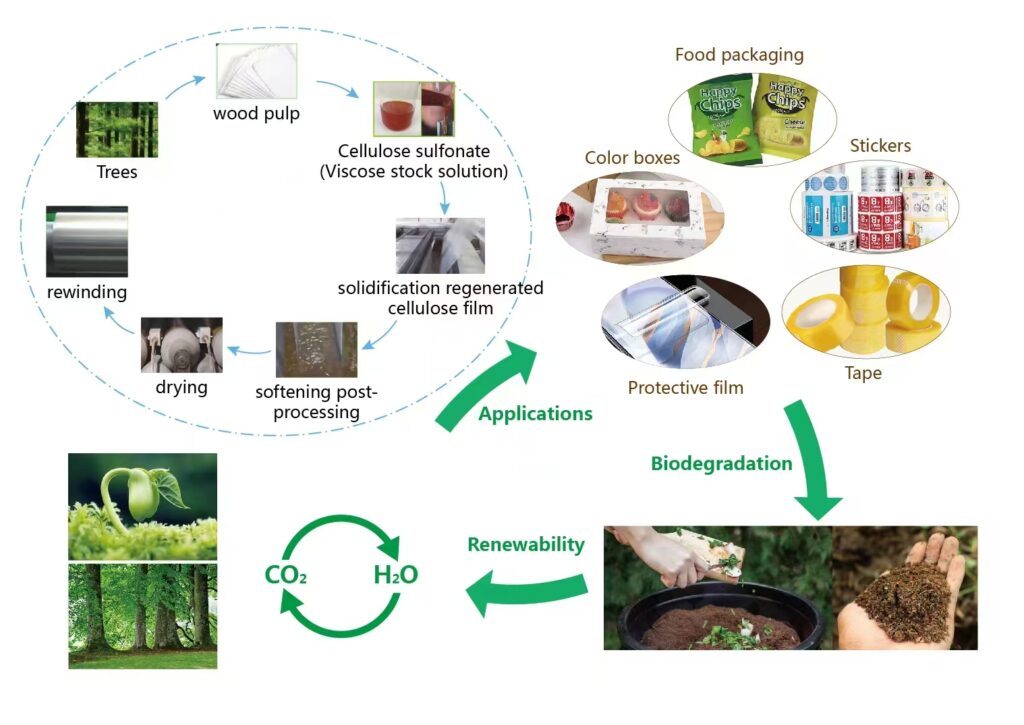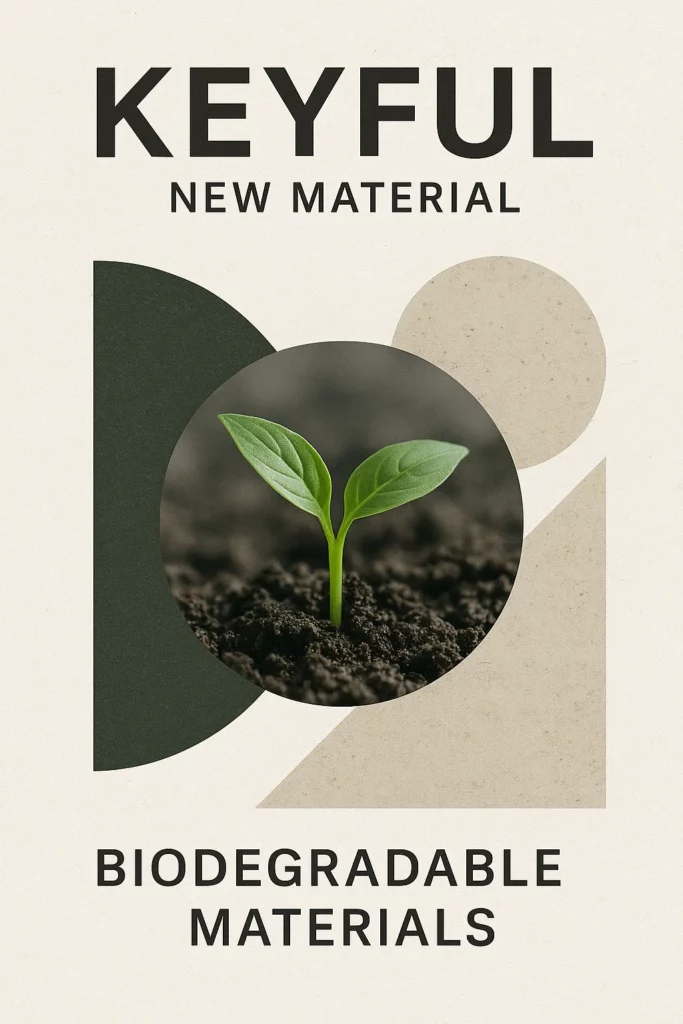Cellulose Film: The Future of Sustainable Packaging

As global awareness of environmental protection grows, the sustainability of packaging materials has become an important issue in the industry. Cellulose film, a natural biopolymer, has gained popularity as an eco-friendly alternative due to its excellent biodegradability and environmental benefits. This article introduces the production process, applications, and environmental advantages of cellulose film.
Production Process of Cellulose Film
The production of cellulose film starts with natural wood pulp, a renewable resource derived from trees. The manufacturing process includes several key steps:
- Wood Pulp Extraction: First, trees are processed to extract wood pulp.
- Cellulose Sulfate Solution: The wood pulp is transformed into a cellulose sulfate solution, which serves as the base material for cellulose film.
- Solidification into Regenerated Cellulose Film: Through specific processes, the cellulose sulfate solution is transformed into regenerated cellulose film. This ensures the film’s strength and transparency.
- Drying and Softening Post-Processing: To ensure the film’s operability, it undergoes drying and softening processes to achieve the desired functionality.
Applications of Cellulose Film
Cellulose film is widely used in various industries due to its excellent transparency, strength, and eco-friendly properties:
- Food Packaging: Cellulose film is commonly used in food packaging to effectively extend shelf life while maintaining the original taste of the food.
- Color Boxes: It is also widely applied in packaging color boxes, especially in high-end products, offering excellent transparency and visual appeal.
- Stickers and Tape: The strength and durability of cellulose film make it ideal for producing various stickers and tapes, especially in applications requiring eco-friendly materials.
- Protective Film: In the packaging of electronic products and other fragile items, cellulose film serves as a protective layer to prevent damage.
These applications not only reduce the usage of plastic but also meet the growing consumer demand for eco-friendly packaging.
Environmental Benefits: Biodegradability and Renewability
One of the most significant features of cellulose film is its biodegradability. As a plant-based material, cellulose film breaks down rapidly in the natural environment without polluting soil or water. Using cellulose film for packaging significantly reduces plastic waste and supports modern environmental regulations.
Additionally, the production process of cellulose film relies on renewable resources, primarily trees. Trees absorb carbon dioxide and release oxygen, helping to mitigate global climate change. Through this cyclical process, the production of cellulose film contributes positively to the ecological environment by reducing carbon footprints.
Conclusion:
With the growing emphasis on sustainability, cellulose film stands out as an eco-friendly, biodegradable packaging material that will play an increasingly important role in the future of the packaging industry. As a leader in this field, Keyful New Material will continue to drive the research and application of cellulose film materials, contributing to the global movement for green packaging solutions.
Our Certificates:
All of our products have been certified by leading global environmental standards such as FDA, EN13432, RoHS, FSC, OK Compost, ensuring they meet both market demands and stringent sustainability criteria.
